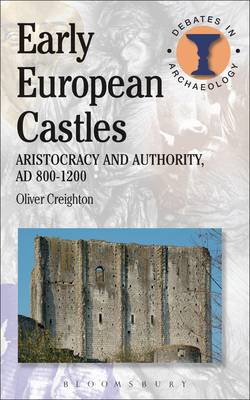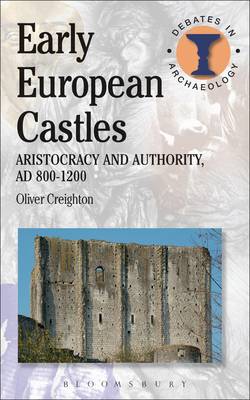
- Afhalen na 1 uur in een winkel met voorraad
- Gratis thuislevering in België vanaf € 30
- Ruim aanbod met 7 miljoen producten
- Afhalen na 1 uur in een winkel met voorraad
- Gratis thuislevering in België vanaf € 30
- Ruim aanbod met 7 miljoen producten
Zoeken
Omschrijving
Medieval castles were, alongside the great cathedrals, the most recognisable buildings of the medieval world. Closely associated with concepts of justice, lordship and authority as well as military might, castles came to encapsulate the period's very essence.
Looking at above and below-ground evidence and examining a wide variety of sites - from towering donjons to earth and timber castles - in different parts of western Europe, this book explores the relationship between early castle building and the emergence of a new aristocracy and investigates the impact of authority on the organisation of the landscape. A particular focus is on the social context of early private fortifications: Europe's earliest castles came to embody a new and radically different form of power - an aristocratic authority that was highly personal in nature, glaringly visible in its presence, and enforceable through violence, both threatened and real. The volume reassesses traditional models of castle origins; examines aspects of elite lifestyle in and around these structures, including pastimes and diet; considers medieval visual experiences of sites and their settings; and explores some future directions for research.Specificaties
Betrokkenen
- Auteur(s):
- Uitgeverij:
Inhoud
- Aantal bladzijden:
- 176
- Taal:
- Engels
- Reeks:
Eigenschappen
- Productcode (EAN):
- 9781780930312
- Verschijningsdatum:
- 24/05/2012
- Uitvoering:
- Paperback
- Formaat:
- Trade paperback (VS)
- Afmetingen:
- 135 mm x 213 mm
- Gewicht:
- 217 g

Alleen bij Standaard Boekhandel
+ 121 punten op je klantenkaart van Standaard Boekhandel
Beoordelingen
We publiceren alleen reviews die voldoen aan de voorwaarden voor reviews. Bekijk onze voorwaarden voor reviews.











